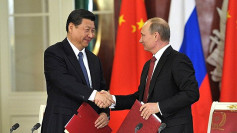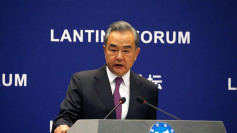China will likely inject more stimuli to further jolt its staggering economy into higher growth following tepid producer prices in October and further weakening in the manufacturing sector due to slumping demand. Producer prices fell to its lowest level in more than three years in October.
China's producer price index (PPI), a key indicator of corporate profitability, dropped 1.6% in October year-on-year, which was the steepest decline since July 2016, according to the National Bureau of Statistics (NBS). Analysts had predicted a contraction of 1.5% for the PPI.
The PPI weakening is the latest indicator confirming shrinking manufacturing activity in October. The official Purchasing Managers' Index (PMI) also fell in October, its sixth straight monthly contraction since April.
Besides the painful deceleration of both the PPI and the PMI, the case for additional government stimulus is being driven by surging consumer inflation. October's consumer price index (CPI) rose 3.8% year-on-year, the highest since January 2012 and far exceeding analysts' expectations for a 3.3% climb.
Analysts concur the sharp rise was driven largely by a steep increase in pork prices and other meats due to the still-raging African swine fever (ASF) that has killed some 200 million out of China's total pig population of 350 million, according to Dutch multinational bank, Rabobank. Pork prices throughout China more than doubled year-on-year in October, according to the NBS.
Then, there are the deleterious effects of Trump's 19 month-long trade war that has so far cost China $35 billion in lost revenues.
Japanese financial services company Nomura Holdings Inc. said it expects the People's Bank of China (PBOC), China's central bank, to maintain its easing policy stance. Nomura believes "there is an elevated risk of a wage-price spiral amid surging pork prices and the spillover effects to other food prices."
It believes PBOC "could potentially become more reluctant to deliver high-profile policy stimulus in coming quarters to avoid fueling inflation expectations."
China's last monetary easing move occurred November 5 when PBOC for the first time since 2016 cut the interest rate in its one-year medium lending facility (MLF) loans.
PBOC cut the MLF loan rate to stimulate a slowing economy hit by weaker demand at home and abroad. The modest reduction might be a sign PBOC is looking to ease investor worries that higher inflation will prevent it from implementing fresh stimulus measures.
The move should result in PBOC its new benchmark Loan Prime Rate (LPR), perhaps by as early as this week. LPR is linked to the MLF rate and is published on the 20th of every month.






